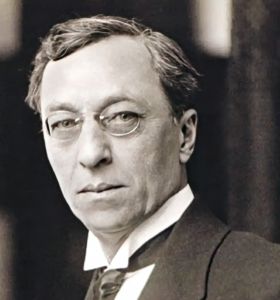
Wassily Kandinsky: A Journey into Abstract Art
Wassily Kandinsky, a Russian painter and art theorist, is revered as the pioneer of abstract art. Born in Moscow and raised in Odessa, Kandinsky’s artistic journey was marked by a profound desire to break free from representational constraints and explore the realm of the abstract. His synesthetic perception, which allowed him to perceive colors and shapes as musical, deeply influenced his work, leading to bold compositions characterized by vibrant colors and geometric forms. Through his pioneering approach to abstraction, Kandinsky challenged the conventions of his time, leaving an indelible mark on the world of art and inspiring future generations of artists to push the boundaries of creative expression.
Kandinsky’s early years were marked by a deep connection to the arts. His education at the Grekov Odessa Art School laid the foundation for his artistic prowess, instilling in him a profound appreciation for the traditional techniques and principles of painting. Yet, it was during his formative years that Kandinsky began to feel the stirrings of a revolution within himself – a desire to break free from the constraints of representational art and delve into the realm of the abstract.
One of the most intriguing aspects of Kandinsky’s journey is his synesthetic perception – a condition that allowed him to perceive colors and shapes as inherently musical. This unique sensory experience profoundly influenced his artistic vision, leading him to explore the interplay between color, form, and sound in his work. For Kandinsky, painting was a symphony of the senses, a harmonious fusion of sight and sound that transcended traditional modes of representation.
In 1910, Kandinsky co-founded the influential artistic group known as the Blue Rider (Der Blaue Reiter) alongside fellow artist Franz Marc. Together, they sought to explore new frontiers in art, embracing the spiritual and the transcendent as guiding principles in their work. Through the Blue Rider group, Kandinsky found a community of like-minded individuals who shared his passion for innovation and experimentation.
It was during this period that Kandinsky produced some of his most iconic works, including “Composition V” and “Composition VII,” which epitomize his pioneering approach to abstract art. In these paintings, Kandinsky eschewed representational imagery in favor of bold, geometric forms and vibrant, expressive colors. Each brushstroke was a symphony of movement and emotion, inviting viewers to immerse themselves in the transcendent world of pure abstraction.
Central to Kandinsky’s artistic philosophy was the belief in the spiritual power of art to transcend the material world and connect with the divine. He saw painting as a form of visual music, capable of evoking profound emotional responses and spiritual insights in the viewer. Through his abstract compositions, Kandinsky sought to awaken the soul and elevate the human spirit to new heights of awareness and enlightenment.
Kandinsky’s influence extended far beyond the realm of painting, encompassing a wide range of artistic disciplines, including architecture, theater, and music. His writings, particularly the seminal work “Concerning the Spiritual in Art,” continue to inspire artists and scholars to this day, offering profound insights into the nature of creativity and the power of abstraction.
Wassily Kandinsky created numerous masterpieces throughout his career, each showcasing his innovative approach to abstract art. Some of his most renowned works include:
1. “Composition VII” (1913): This monumental painting is a prime example of Kandinsky’s mature abstract style. It features a complex interplay of geometric shapes, bold colors, and dynamic brushwork, inviting viewers to explore the depths of the artist’s imagination.
2. “Composition VIII” (1923): Another iconic work, “Composition VIII” is characterized by its intricate composition and vibrant palette. Kandinsky’s use of overlapping forms and rhythmic patterns creates a sense of movement and energy that captivates the viewer’s attention.
3. “Yellow-Red-Blue” (1925): As one of Kandinsky’s most recognizable paintings, “Yellow-Red-Blue” exemplifies his mastery of color and form. The harmonious balance of primary colors and geometric shapes reflects the artist’s spiritual beliefs and his quest for inner harmony.
4. “Improvisation 28 (Second Version)” (1912): This dynamic composition is part of Kandinsky’s “Improvisation” series, which showcases his spontaneous and expressive approach to painting. “Improvisation 28” is characterized by its swirling forms and intense colors, evoking a sense of emotional intensity and creative freedom.
5. “Composition X” (1939): Created towards the end of Kandinsky’s career, “Composition X” is a testament to his continued experimentation with form and color. The painting features a symphony of shapes and lines that converge and diverge across the canvas, creating a sense of movement and depth.
Wassily Kandinsky, a visionary whose bold experimentation and unwavering commitment to innovation continue to resonate with audiences around the world. Through his pioneering exploration of abstract art, Kandinsky challenged the conventions of his time and paved the way for future generations of artists to push the boundaries of artistic expression. He was one of the most influential artists of the 20th century, whose pioneering spirit continues to inspire artists and art enthusiasts worldwide.

